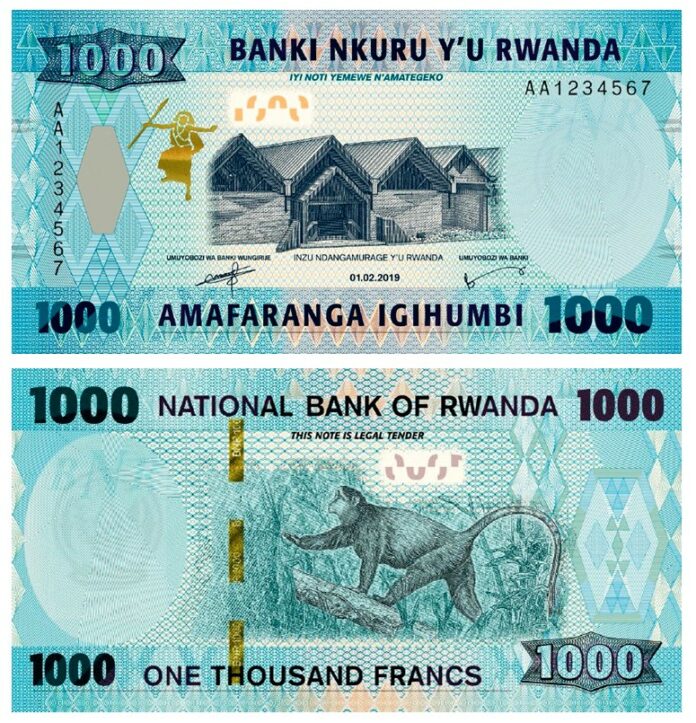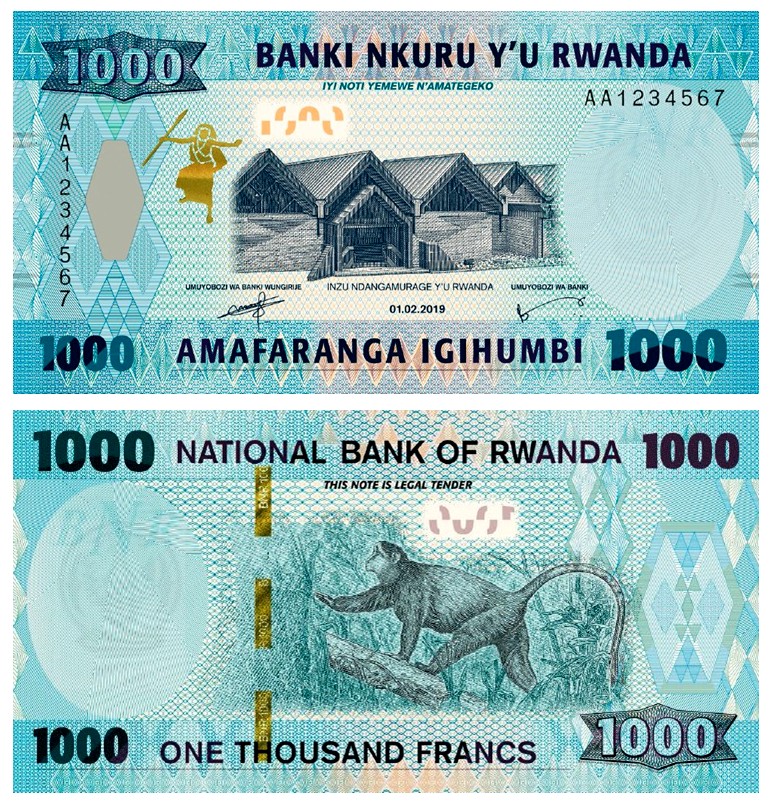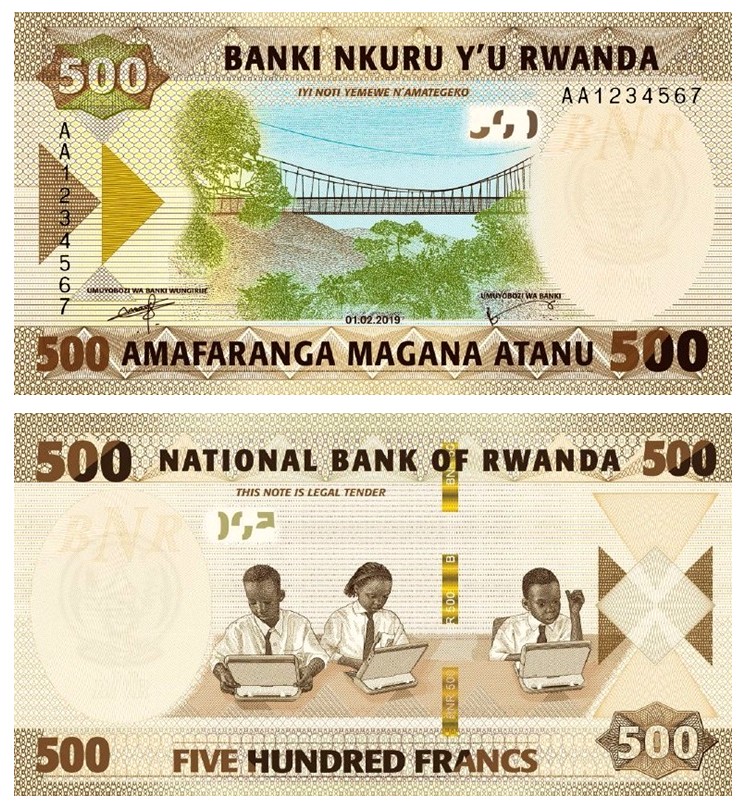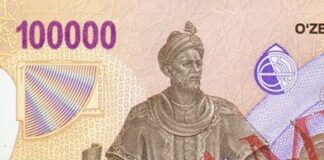
The National Bank of Rwanda has released two new banknote denominations of 1000 (US$ 1.13) and 500 Francs (US$ 0.565) which introduces a new series of banknotes and integrates new designs and security features. The designs of both notes in the new series incorporates elements which highlights the beauty of Rwandan culture and the country’s tourism, the designs of the banknotes are hoped that they will be seen as part of the promotion as one of the key drivers of the Rwandan economy.
1000 Francs (Amafaranga Igihumbi)
The note retains the same blue colour scheme and dimensions as the previous issue along with the same design and features. The obverse or front side includes a depiction of The Ethnographic Museum, formerly the National Museum of Rwanda which is the national museum of Rwanda and located in Butare, a city in the Southern Province and the former colonial capital of Rwanda. The reverse or back side of the notes include the image of a Golden monkey, a species prevalent on Central Sub-Saharan Africa and resident in the Volcanoes National Park which lies along the Virunga Mountains, and is centred.
500 Francs (Amafaranga Magana Atanu)
The new note in this series is changed in its colour scheme from the previous green to a dominant brown with corresponding shades. The obverse or front side includes a depiction of the Nyungwe Canopy, a walkway which is in the Nyungwe National Park, an untouched natural rainforest that is filled with exciting biodiversity Located in the South West corner of Rwanda. Shown on the reverse or back side of the new notes are 3 young students with laptops, reflecting Rwanda’s efforts to promote and strengthen quality education using information technology.

Security features included on the 1000 Franc note:
Colour-shifting ink application: When the note is tilted, the figure of a tribal intore dancer changes from gold to green.
Watermark: The coat of arms of the Republic of Rwanda and letters “BNR” is visible when held against the light.
Security thread: A new security thread visible on the reverse which is more visible and appears segmented. When tilted, the colour of the thread will change from gold to green.
Latent image: The silver-coloured geometrical shape located close to the vertical serial number reveals the initials “BNR” when tilted against a light source.

Security features on the 500 Franc note:
Security thread: Shown on the reverse, the segmented wide thread reveals a colour change from gold to green when tilted.
Watermark: The coat of arms of the Republic of Rwanda and letters BNR highlighted below is visible when the note id held up to the light.
Latent imaging: Located in a new golden triangle shape situated next to the vertical serial number, when tilted against a light source, the initials “BNR” are revealed.
The National Bank has announced the old series notes will continue to be used alongside the newly issued series in cash transactions for the next three years until they are officially removed from use.
It is noteworthy to mention that a proposal exists to introduce a common currency, a new East African shilling, for the six member states of the East African Community that includes the countries of Burundi, Kenya, Rwanda, South Sudan, Tanzania, and Uganda. While originally scheduled to occur by the end of 2012, as of June 2016, the proposed common currency had not been introduced.
The National Bank of Rwanda, established on the 24th April 1964 began issuing its own currency which continued on from coins and banknotes issued previously from the Banque d’ Emission du Rwanda et du Burundi. This issuing authority was dissolved in January 1964 after the two states of Ruanda and Burundi were officially separated in July 1962 and with independence from the Kingdom of Belgium. The current series of banknotes which consists of the 500, 1000, 2000 and 5000 Franc denominations was first issued between 2004 and 2009.
The author, Michael Alexander is president of the London Banknote and Monetary Research Centre.
For additional information on these and other banknotes and coins issued from the National Bank of Rwanda, please visit their website.
CoinsWeekly published a detailed report on the proposed currency union of the East African Community.



